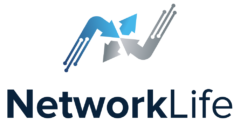Anatomy of a router
For this first post, I will speak about the principal networks device: the router.
Routers are essentials components of networks using TCP/IP, because they provides possibility to interconnect large wide area networks.
Routers have two functions :
- Path determination: Maintain his own routing tables and the others on the network.
- Packet forwarding: Routers use his routing tables to determine “where” they must transmit packets. They forward packets through network interfaces to the network destination identified into the IP packet.
Internal components
Physical architecture
- CPU: processor RISC, type MIPS or Motorola
- Mother board
- Memory: RAM, ROM, NVRAM, FLASH, detailed in next part..
- Bus
- Interfaces (I/O)
Memory architecture
- RAM : Principal working memory, his size is 64 Mo on a 2620XM router. Contains the Routing table, running-configuration, Buffers, Stack, IOS.
- NVRAM (Non-volatil RAM): Used to backup the configuration. (32ko on a 2620XM router). Contains startup-configuration, and the configuration register.
- Flash: Mass storage (32Mo on a 2620XM router). Contains the IOS image
- ROM: Used to starting up the router. Contains the Bootstrap, like a BIOS on a PC.

Interior of a router

Linking
Two interfaces type: LAN & WAN.
Available on 3 forms : Fixed to chassis, on WIC card, on NM module.
Access for configuration:
- Console line: primary access, available without configuration. Exist on all CISCO devices.
- Auxiliar line: Remote access, using 1 RTC line or modems. Need a configuration.
- VTY Line: Virtual TeletYpe. For remote access. Need a configuration, and one fonctional interface. Use Telnet or SSH.
- Web explorator: Use an internal server on the router. Need a configuration and one fonctional interface.
- TFTP Server: The router can be used in TFTP server mode.By example to forward an IOS image to another router.
Starting a CISCO Router
Initial startup of a Cisco router:
The startup of a Cisco router requires verifying the physical installation, powering up the router, and viewing the Cisco IOS Software output on the console. To start router operations, the router completes the following tasks:
- Runs the Power-on self test (POST) to test the Hardware. A diagnostic to verifying the basic operations of the CPU, memory and interface circuitry.
- Finds and loads the Cisco IOS Software that the router uses for its operating system
- Finds and applies the configuration statements about router-specific attributes, protocol functions, and interface addresses
Initial setup of a Cisco router:
When the router starts up, it looks for a device configuration file in its NVRAM. If it does not find one, the router executes a question-driven initial configuration routine, called “setup”. Setup is a prompt-driven program that allows a minimal device configuration. Setup is not intended for entering complex protocols features in the router.



Comments are Disabled